Samsung S85D is Samsung's entry-level OLED model for 2024, but it certainly doesn't feel "budget". From the very first contact, the TV demonstrated that OLED technology makes a difference. Deep blacks, excellent contrast, and great viewing angles make watching your favourite films and series pure pleasure, no matter where you sit. It's a screen that can truly immerse you in the action. The Tizen operating system is another strong point of Samsung S85D. It's simple, intuitive, and runs smoothly. Switching between apps like Netflix and YouTube takes a moment, and the ability to support AirPlay and Bluetooth provides plenty of options for connecting other devices. The solar remote not only doesn't need charging, but we also had no trouble using it to control the set-top box or soundbar – these are small details that make daily usage easier. Like any TV, S85D has its minor shortcomings. The lack of a recording feature can be noticeable, especially if we like to go back to our favourite shows or films. The absence of support for DTS soundtracks may require purchasing and directly connecting a Blu-ray to an external audio system. If we want to fully utilise this codec, it's worth keeping this in mind. SDR brightness, while sufficient in most cases, may not always meet expectations in brighter rooms. It's a TV that shows its best side in the evening – that's when the OLED black and contrast really impress. Despite these few drawbacks, S85D left us with very positive impressions. It’s a model that proves excellent picture quality and great technological solutions don't have to come with a high price tag. If we're looking for a TV that performs well in everyday use as well as during evening screenings without ruining our budget, then Samsung S85D OLED is a great choice. It's a device that gives the feeling that we've made a good investment, offering really a lot for a reasonable amount.
- Matching (Score)
- Our verdict
- TV appearance
- Where to buy
- Contrast and black detail
- HDR effect quality
- Factory color reproduction
- Color reproduction after calibration
- Smoothness of tonal transitions
- Image scaling and smoothness of tonal transitions
- Blur and motion smoothness
- Console compatibility and gaming features
- Input lag
- Compatibility with PC
- Viewing angles
- TV efficiency during daytime
- Details about the matrix
- TV features
- Apps
- Playing files from USB
- Sound
Samsung S85D vs Hisense U7Q PRO
Direct compare
S85D
U7Q PRO / U78Q PRO


Panel type: WRGB OLED
Resolution: 3840x2160
System: Tizen
Model year: 2024
Complete the survey to find out the result

Panel type: LCD VA
Resolution: 3840x2160
System: VIDAA
Model year: 2025
Complete the survey to find out the result

Overall rating
7.8
7.4
Movies and series in UHD quality
7.8
7.2
Classic TV, YouTube
8.6
7.2
Sports broadcasts (TV and apps)
8.4
6.7
Gaming on console
9.4
8.2
TV as a computer monitor
7.6
8.2
Watching in bright light
5.0
6.2
Utility functions
7.4
9.4
Apps
8.7
7.7
Sound quality
7.0
7.8
Complete the survey to find out what fits your preferences
Advantages
Outstanding contrast - OLED
Tizen system – fast and intuitive
Solar remote – control of other devices (e.g. decoder)
Excellent viewing angles – OLED
High motion fluidity – 120 Hz panel
Lots of functions for gamers
Unusual design
Price
Excellent contrast and black - true Mini-LED backlighting with VA panel (65")
Very good motion fluency - 4K@165 Hz panel
Very high HDR brightness - even above 1500 nits
Perfect for gaming - Low input lag, VRR, ALLM, 4x HDMI 2.1, 288Hz at 1080p.
Vidaa operating system has many features like Airplay, USB recording
Outstanding quality of tonal transitions
Disadvantages
No recording feature from the built-in tuners
Average SDR brightness – 310 nits
No support for DTS audio tracks
No support for HGiG
Average viewing angles
Missing apps on the VIDAA platform
Our verdict
The U7Q PRO is a TV that makes it clear within minutes: "speed is what matters here". Hisense has surprised us with how much they’ve packed into a device that doesn’t cost a fortune. A refresh rate of 165 Hz in 4K, and even 288 Hz in Full HD – not long ago, such figures were reserved exclusively for top-end gaming monitors. And here we have a mid-range TV with almost a full suite of features for gamers, confidently throwing down the gauntlet to much pricier competitors. But it doesn’t stop at speed. The U7Q PRO also boasts a very bright screen, peaking at an impressive 1500 nits. Like every Mini-LED, it has its typical "moods", occasionally exaggerating the image, but the overall visual effect remains very positive – especially in HDR content. It’s also worth mentioning the Vidaa operating system – fast, intuitive and equipped with features like AirPlay, a voice assistant, and a web browser. While it doesn’t offer the full range of apps found on Android, in everyday use the system performs exceptionally well. So, why is it “almost” perfect for gamers? It just lacks the HGiG feature, which allows for precise adjustment of brightness levels in HDR games. It’s a minor drawback, but it can be significant for console purists. Nevertheless, the U7Q PRO remains a very solid proposition – and a testament to the fact that Chinese manufacturers have not only caught up with competitors from Korea and Japan, but in some aspects have even begun to overtake them.
TV appearance







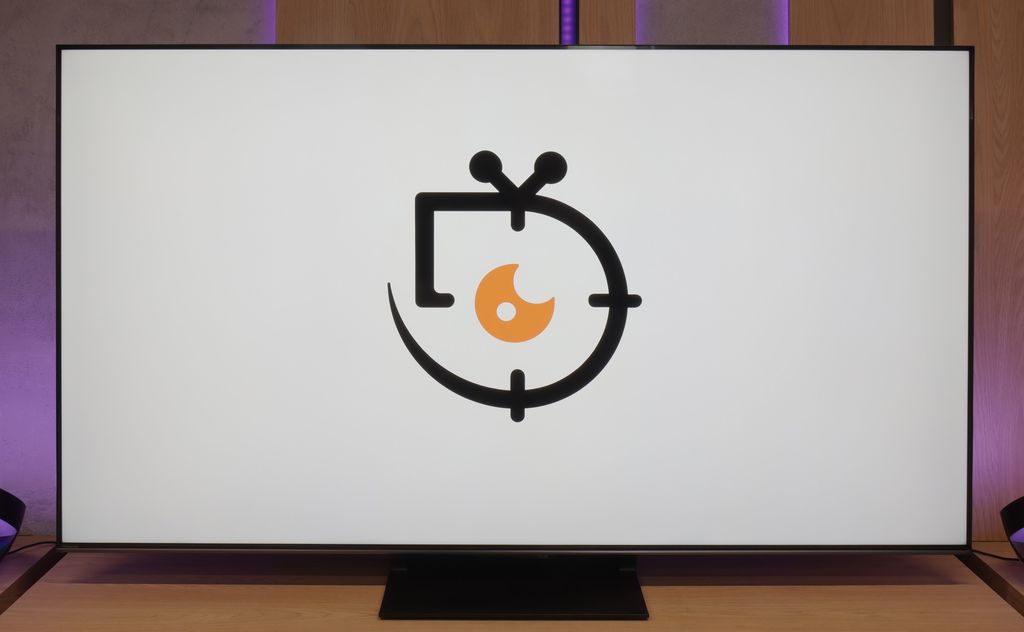
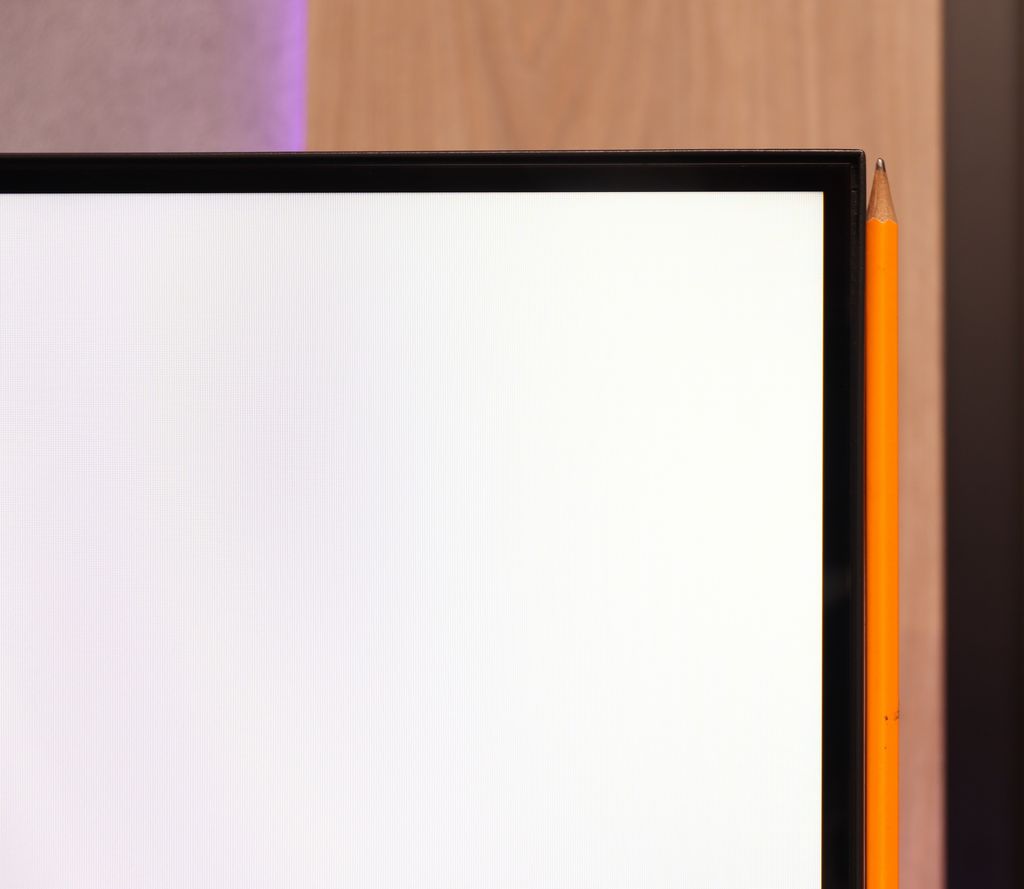
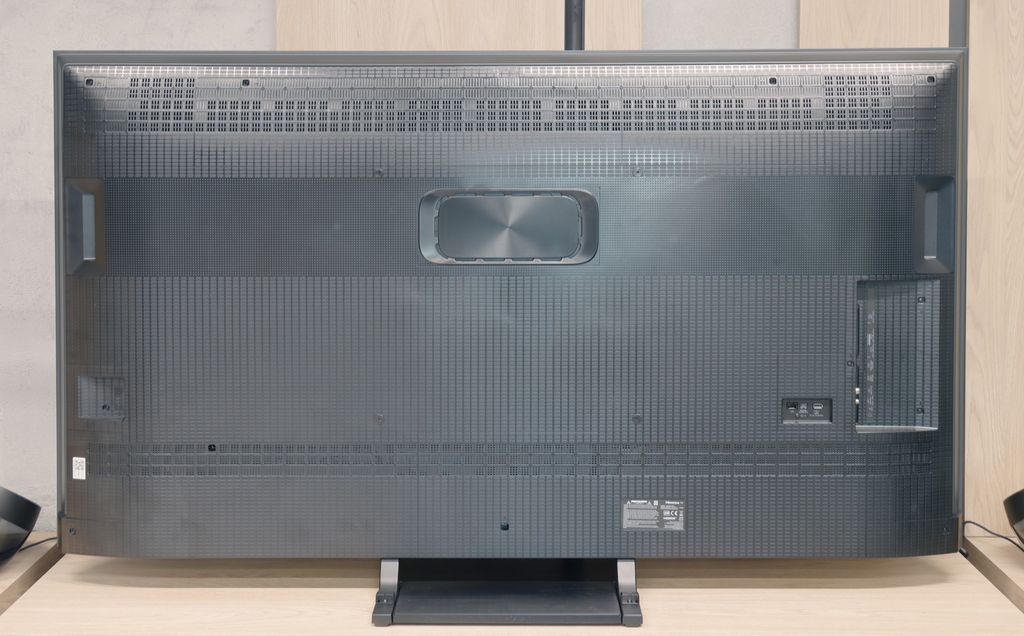

Contrast and black detail
10/10
8/10
Local dimming function: Yes, number of zones: 560 (20 x 28)
Contrast:

Result
∞:1

Result
∞:1

Result
∞:1

Result
∞:1

Result
∞:1

Result
340,000:1

Result
62,850:1

Result
42,000:1

Result
11,100:1

Result
7,500:1
Halo effect and black detail visibility:

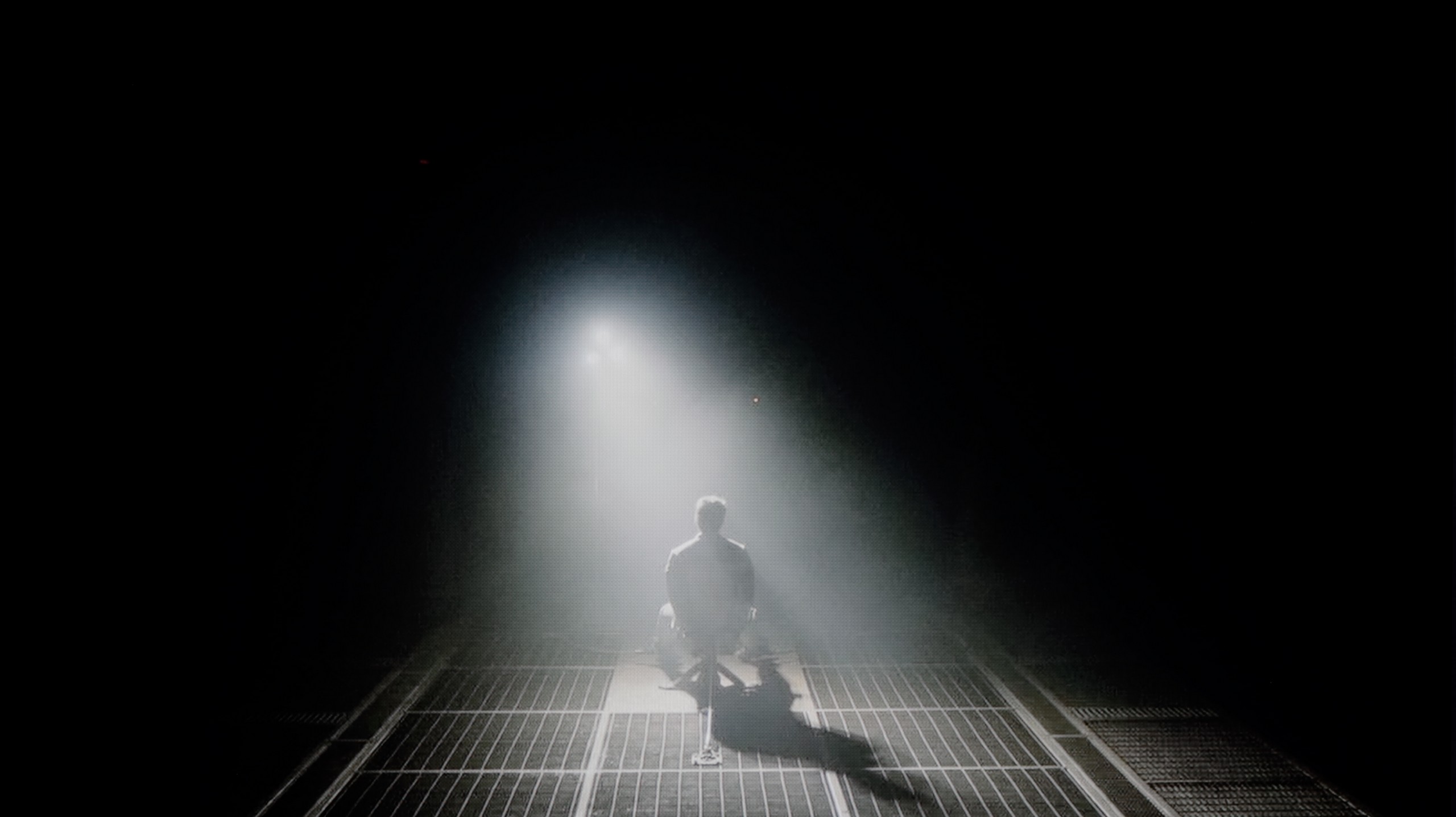
Samsung S85D is a television that truly makes a difference when it comes to picture quality. The blacks are so deep it’s hard to believe, and the contrast makes even the most demanding scenes – like those from the film “Oblivion” – look incredibly lifelike. Thanks to OLED technology, dark areas of the screen are perfectly black, without any unwanted glow or blooming.
It’s worth highlighting that, similar to some variants of the S90D model, the Samsung S85D uses a WOLED panel supplied by LG. This panel is a key element that contributes to the amazing contrast quality, which is particularly noticeable in scenes with high dynamic lighting, making it the perfect choice for lovers of high production quality films and series.
Hisense U7Q PRO is a mini-LED television with a VA panel and – in the version we tested, 65 inches – 560 local dimming zones. It's worth noting straight away that this number varies depending on the size – larger diagonals get more zones, while smaller ones get fewer accordingly. But regardless, the dimming system itself works really solidly here.
The contrast is genuinely very good for the price range in which this model is placed. In optimal conditions, the U7Q PRO can achieve results close to six-figure values, which until recently was reserved for much higher-end equipment. In practice – in scenes like the one from the film Oblivion – the picture looks stunning. With the lights on in the room, it's hard at first glance to distinguish this TV from organic screens. Of course, it’s still an LCD with local dimming, so compromises are unavoidable. In more challenging scenes, where there are many small light sources, the U7Q PRO tends to dim too aggressively. Instead of a slight degradation of black – some details that should be visible disappear. This is a side effect of the algorithm, which firmly adheres to the principle of “black should be black,” even at the expense of subtle elements in the picture.
But nonetheless – contrast is one of the stronger points of this model.
HDR effect quality
5.7/10
6/10
Luminance measurements in HDR:

Result
570 nit

Result
580 nit

Result
666 nit

Result
629 nit

Result
283 nit

Result
1129 nit

Result
323 nit

Result
721 nit

Result
267 nit

Result
736 nit
Scene from the movie “Pan” (about 2800 nits)

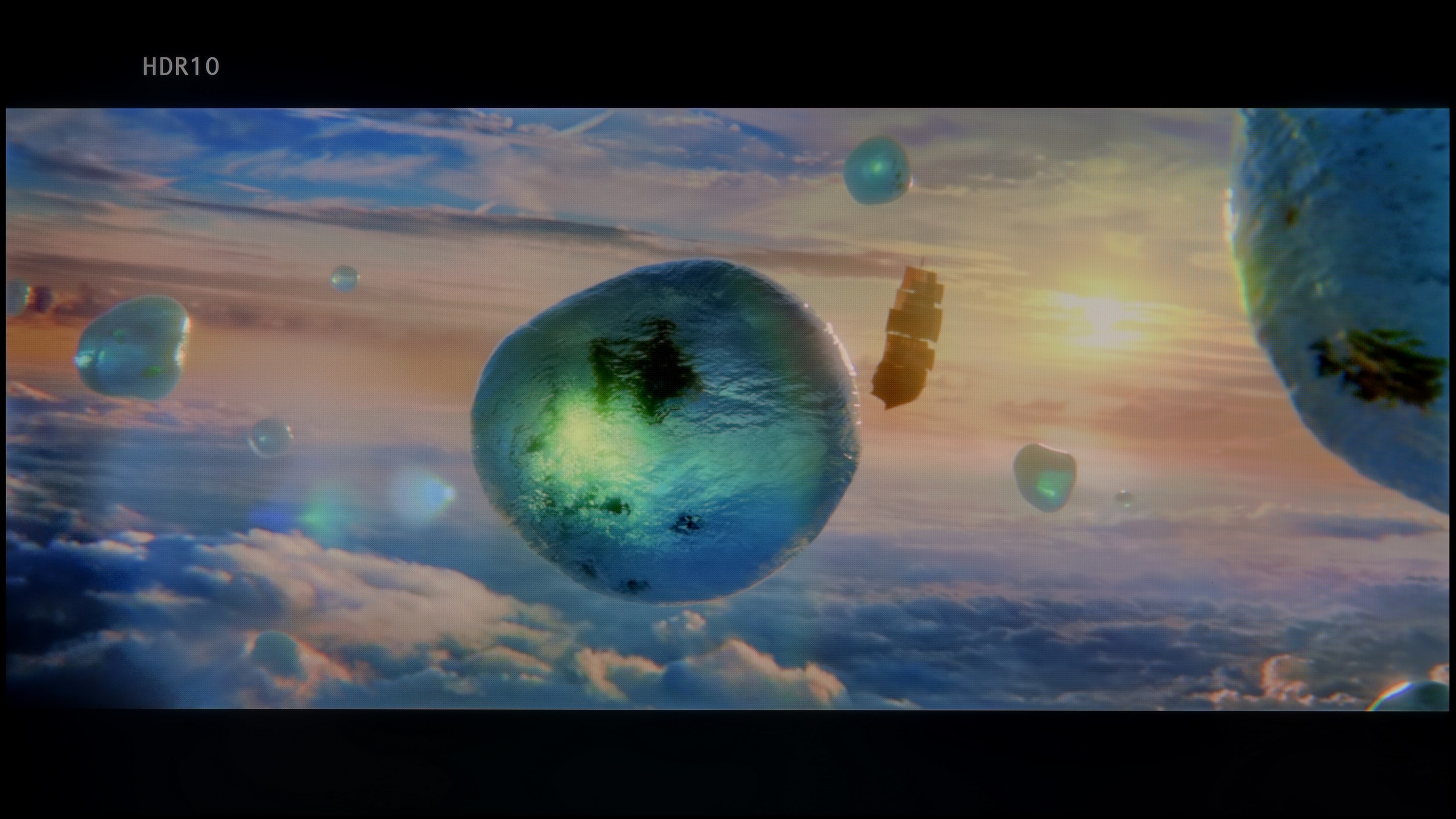
Scene from the movie “Billy Lynn” (about 1100 nits)


Static HDR10


Dynamic: HDR10+
Dynamic: Dolby Vision


HDR luminance chart:
Hisense U7Q PRO
HDR luminance
Samsung S85D
HDR luminance
Luminance of RGB colors
Brightness is a key parameter in televisions, and the S85D Samsung model offers a level comparable to other OLEDs from a few years ago. Though it doesn't impress in this regard, its huge advantage is a very competitive price. A peak brightness of 600 nits provides good image quality in HDR conditions, giving users a taste of cinema-like experiences in the comfort of their home. However, as with many budget OLED models, the biggest problem is very bright, full-screen scenes – in such moments, like the final shot from the movie "The Meg," the television can lose as much as half of its brightness, which is noticeable compared to more expensive OLED models. Despite this, the television offers an impressive DCI-P3 colour gamut coverage of 99%, allowing for the display of vibrant and accurate colours.
U7Q PRO is truly a bright television. In synthetic tests, it achieved over 1500 nits, which is an outstanding result for this price bracket. Such brightness – at least in theory – allows it to display HDR content as intended by the creators, even in more demanding scenes with strong lighting. In practice, it performs very well, but not always perfectly. In bright scenes with large areas – like the test screen with intense sunlight from the film "Pan" – the U7Q PRO makes a huge impression. It can even dazzle with its light, which is definitely an advantage in the context of HDR content. Unfortunately, it doesn’t always manage to maintain this when there are many small bright details on a dark background. In such moments, the local dimming algorithms tend to dim some bright elements to maintain good blacks – and the side effect is that some details simply vanish from the frame. This is a classic compromise in mini-LED televisions – and the U7Q PRO is no exception. With such a large number of dimming zones, however, one could have hoped for a slightly more mature algorithm responsible for their control. Fortunately, the overall perception of HDR content is very positive. The U7Q PRO is not only bright but also colourful, thanks to the PFS LED (QLED) coating, the coverage of the DCI-P3 colour palette is at 95%, and BT.2020 around 73%.
Factory color reproduction
6.6/10
6.2/10


Factory Mode
After calibration


Factory Mode
After calibration
The Filmmaker mode on Samsung's S85D does indeed offer the best factory settings, but it is not without flaws, particularly evident in colour reproduction. The white balance graph for HD and HDR content shows clear issues – both red and blue colours are significantly weakened, leading to a dominance of green. The result is an unnatural yellowish tint that can affect the perception of realistic scenes. The Color Checker test clearly shows that the colour samples deviate from the expected values – for HD materials, the colours tend to be overly saturated, with a marked shift towards green, which is also evident in the white balance graph. Conversely, for 4K HDR content, the colours appear too dull and lacking in depth, causing the image to lose its appeal and naturalness. This effect is particularly noticeable in delicate scenes where colour precision plays a key role, which can be disappointing for discerning viewers who expect faithful reproduction of details and colour intensity.
When it comes to brightness, the gamma graph for HD content looks quite good; however, there is a clear spike at the end, exceeding the value of 2.4. Although this is not a major issue in most scenes, in more demanding sequences it can affect the clarity of bright details. For 4K content, the EOTF curve, responsible for rendering brightness, proves to be problematic. The initial part of the graph shows a slight spike. This phenomenon can result in excessive boosting of brightness in the brightest areas of the image, leading to a loss of detail in very bright scenes.
Although Samsung S85D offers quite decent factory settings, especially in Filmmaker mode, it is worth considering manual adjustment of settings to improve some imperfections, particularly in colour reproduction.
We tested the U7Q PRO in the best possible picture mode that this model offers – Filmmaker Mode. And indeed, this mode performs the best in terms of colour reproduction. But that doesn’t mean it’s perfect. In our test unit, both in SDR and HDR content, the image had a slightly cooler tone. The white balance was shifted towards blue, which made the overall image feel a bit "cooler." It may not be glaring, but it is definitely noticeable – particularly on white backgrounds, which instead of being neutral, seemed slightly bluish. Additionally – as we mentioned earlier – the television has a tendency to slightly brighten and oversaturate the image, which is also confirmed by the gamma and EOTF charts. All of this together means that without calibration, the image may appear somewhat unnatural – too cool, with slightly exaggerated dynamics. That’s why we decided to perform our own calibration – and you can see its effects and charts below.
Color reproduction after calibration
8.7/10
7.5/10




After calibration, the Filmmaker mode on Samsung S85D really impressed. The white balance, regardless of the type of content, has improved significantly, resulting in more natural colours. The Color Checker test shows that colour reproduction errors are now minimal and rarely exceed acceptable values, which indicates precise colour reproduction. The factory colour representation left a lot to be desired, but now the situation has significantly improved – colours are natural, accurate, and look as if they have been precisely rendered according to the creators' intentions. This is a huge step forward compared to earlier generations, where colours were often distorted or too intense.
The brightness characteristics have also benefited from calibration – it's now more vivid and precise. The gamma, although reasonably good before, has become even more stable, providing a deeper, more natural image. The EOTF curve has been flattened, allowing details in dark areas to be more visible, and the contrast is better balanced. Thanks to all these improvements, the television delivers an image close to reference quality, which definitely enhances the enjoyment of watching films and HDR content.
Thanks to calibration, we've managed to tame the white balance in SDR and HDR content. For SDR material, the effect is really quite good – the image becomes neutral, cohesive, and simply pleasant to watch. Everything looks the way it should.
HDR performs a bit worse. Although the white balance looks correct and overall the image gains naturalness, unfortunately, the delta E errors are still noticeable. Why? Because Hisense's U7Q PRO model does not give us full control over how the television manages brightness in HDR mode. And this is where the limitation arises. When we look at the EOTF curve for HDR content, it clearly shows what we mentioned earlier – at the beginning of the graph, there’s a noticeable drop, meaning the television darkens the smallest portions more than it should. On the other hand, those brightest elements can be overly bright. As a result, some details are lost, others are too aggressive, and overall control over brightness doesn't always align with what we’re trying to achieve during calibration.
Does the image look better after calibration? Definitely, yes, in terms of colour. But when it comes to brightness management in HDR, one must accept that the Hisense U7Q PRO will still do it in its own way.
Smoothness of tonal transitions
7.2/10
9.5/10












Samsung OLED S85D handles tonal transitions very well. There are no major issues, and transitions between different colour levels are smooth and natural. The only minor drawback is slight problems around the reds, where in some scenes, you can notice a bit of interference. Nevertheless, the overall effect is very positive – the television performs excellently with most material.
The U7Q PRO handles tonal transitions really well. Colours blend smoothly, with no banding, stripes, or strange artefacts. Even in tougher scenes that typically expose any imperfections – there was nothing to criticise here. The picture simply looks clean. The gradients – both colour and grey – are fluid, nothing tears, nothing distracts. It's one of those elements you don't notice while watching… certainly not with the U7Q PRO.
Image scaling and smoothness of tonal transitions
7.4/10
7.8/10
Smooth transition function

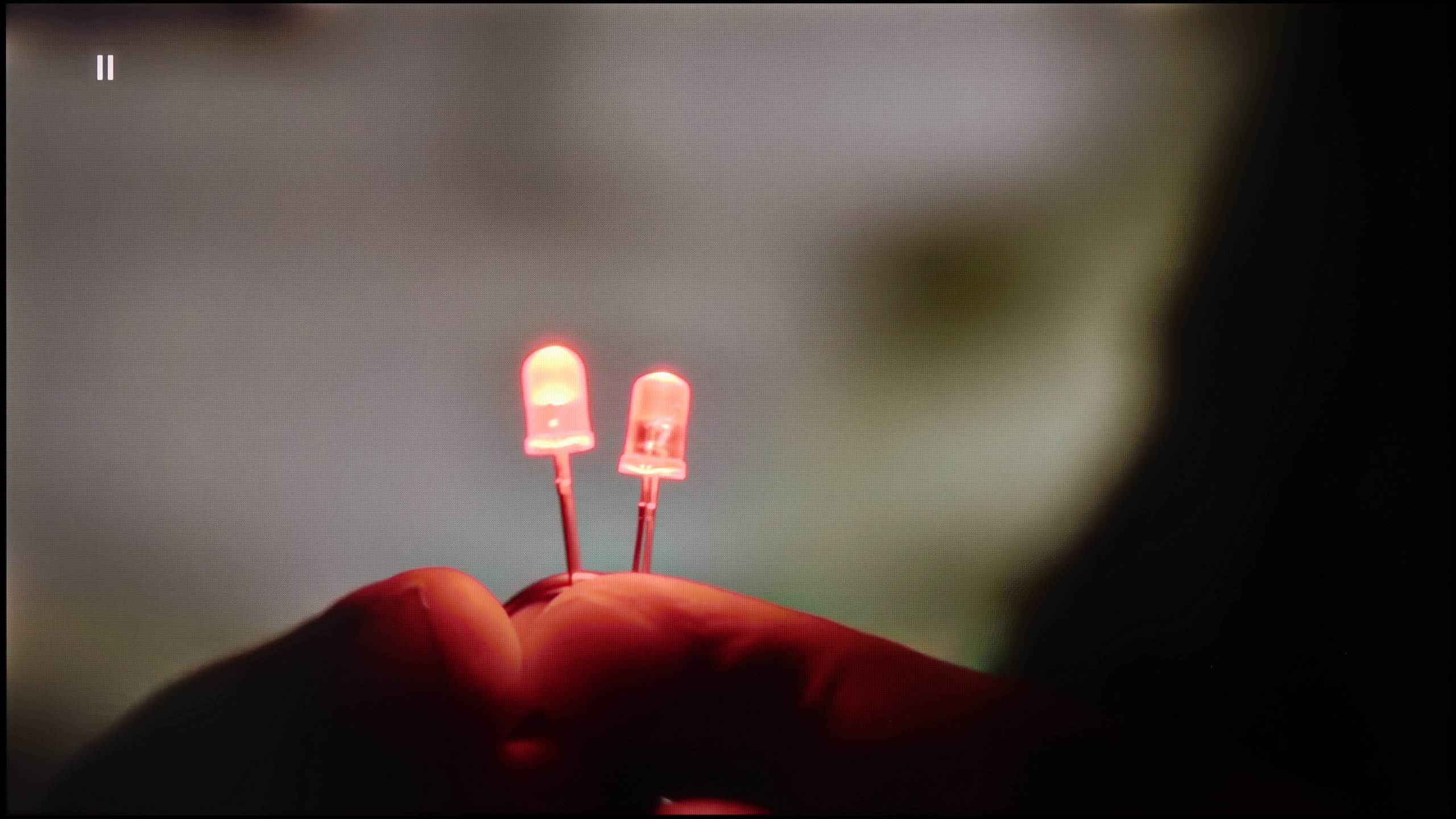
Image without overscan on the SD signal


Samsung S85D does a great job of scaling images and smoothing tonal transitions. Like other Samsung models, the television offers three noise reduction modes: off, standard, and high. While it improves gradation well, it unfortunately also removes film grain, which many viewers desire to give the image a cinematic character. This grain often adds authenticity and a certain rawness to films that is lost once it is smoothed out. Removing the grain can make the image appear too sterile and smooth, which takes away some of the charm of the original film material. When it comes to image scaling, the Samsung S85D excels at displaying lower resolution content – the model in the photo and the branches in the background were shown correctly, without major issues with jagged edges. The only noticeable downside is the presence of overscan, which can sometimes cut off parts of the image, which may not appeal to everyone.
If someone happens to come across older materials where the banding issue arises – Hisense has a solution for that. In the U7Q PRO, we find a feature called "Smooth and Gradient Picture". Set to the "Medium" level, it works really well – eliminating most gradient problems without smoothing the entire image like a blur in Photoshop. 😉 Film grain remains, details don't disappear – that's exactly how it should work. Well done on the implementation!
As for scaling weaker materials, it's simply good. It's not at the level of the most expensive TVs with advanced upscaling, but older content looks good. There is some minor banding at very low resolutions, but that's perfectly normal and hard to avoid. On the plus side – even with the oldest materials, there is no overscan effect, the image isn't cropped or artificially stretched.
Blur and motion smoothness
8.5/10
7.1/10

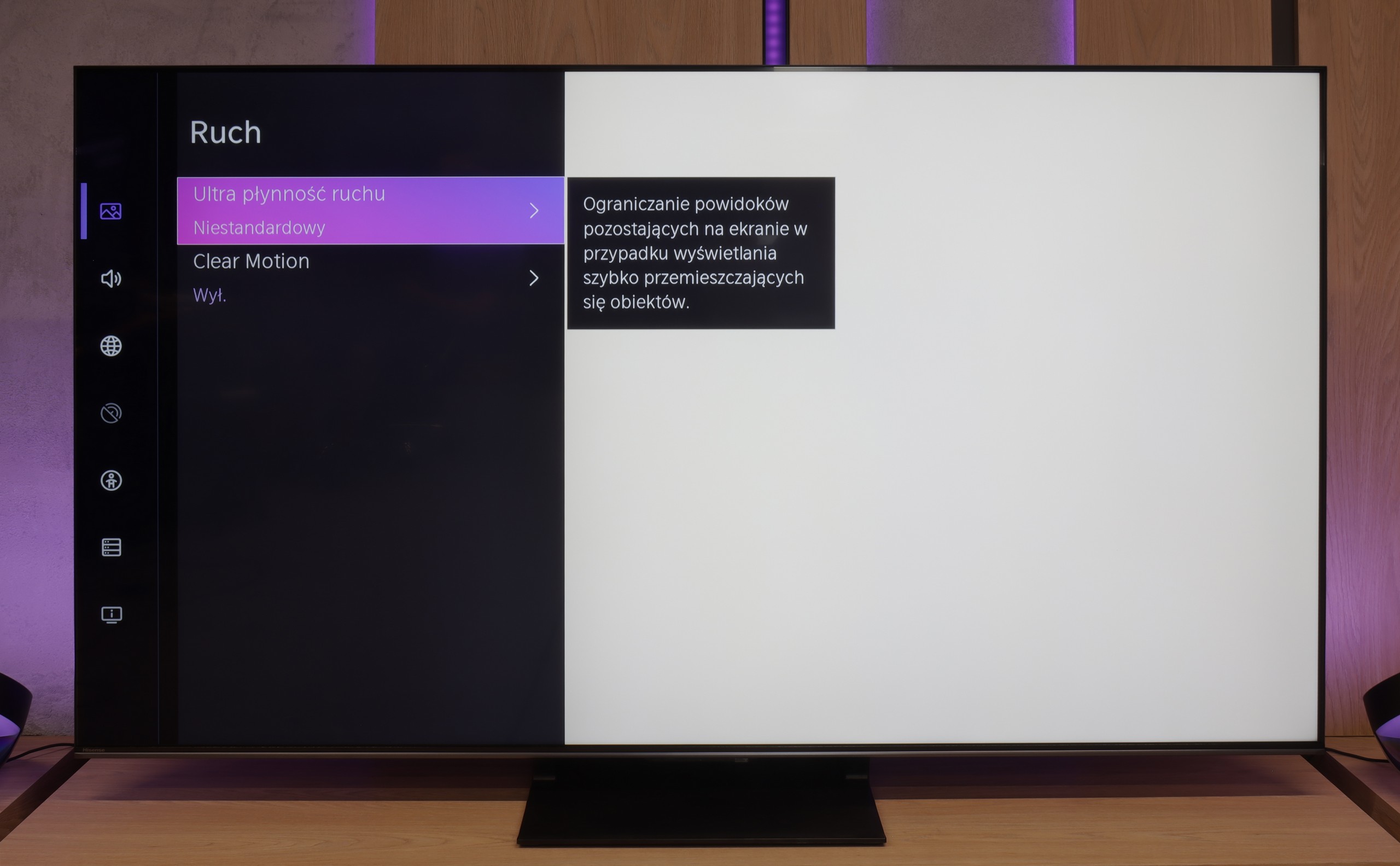
Blur (native resolution, maximum refresh rate):



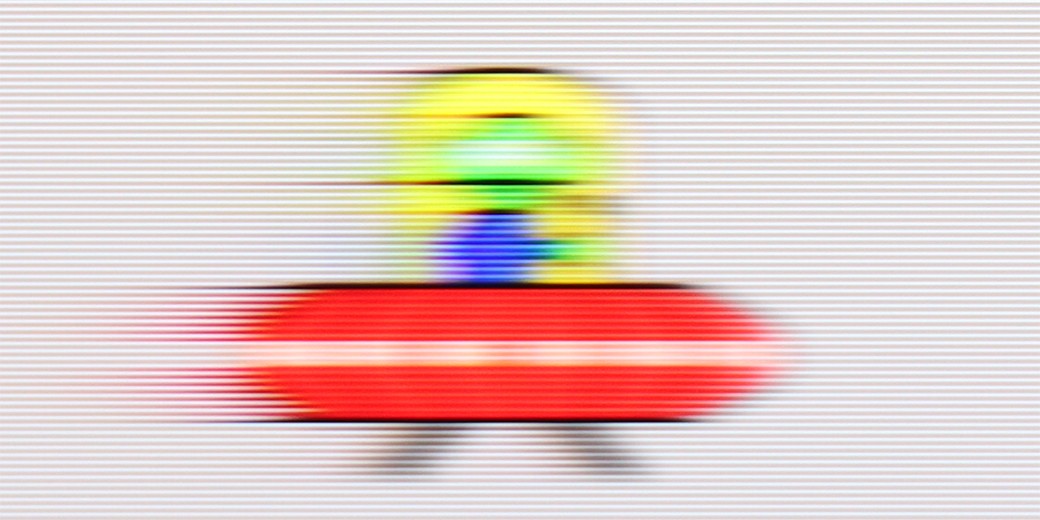
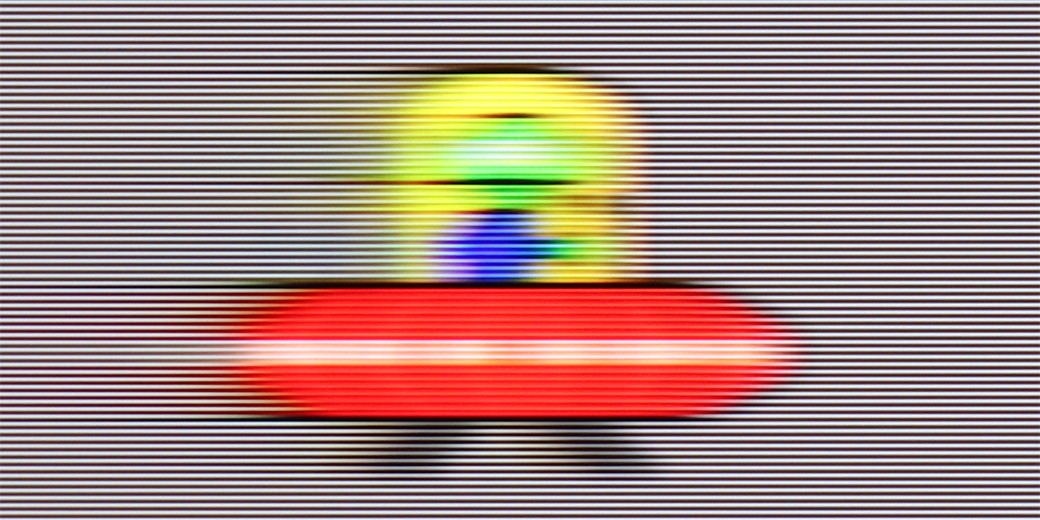
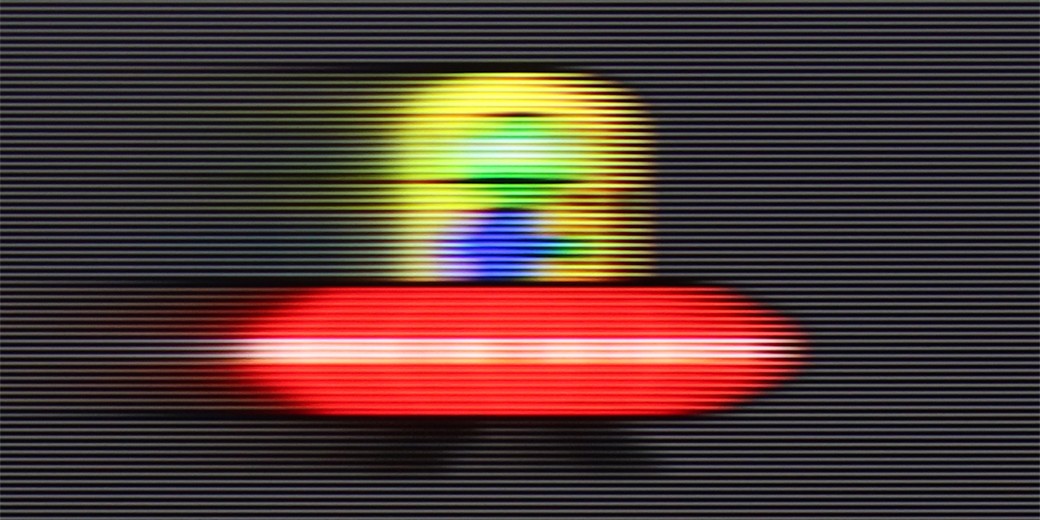
Blur (BFI function enabled):
Image flickers in this mode



Smużenie ():
Smużenie (1080p 288Hz):

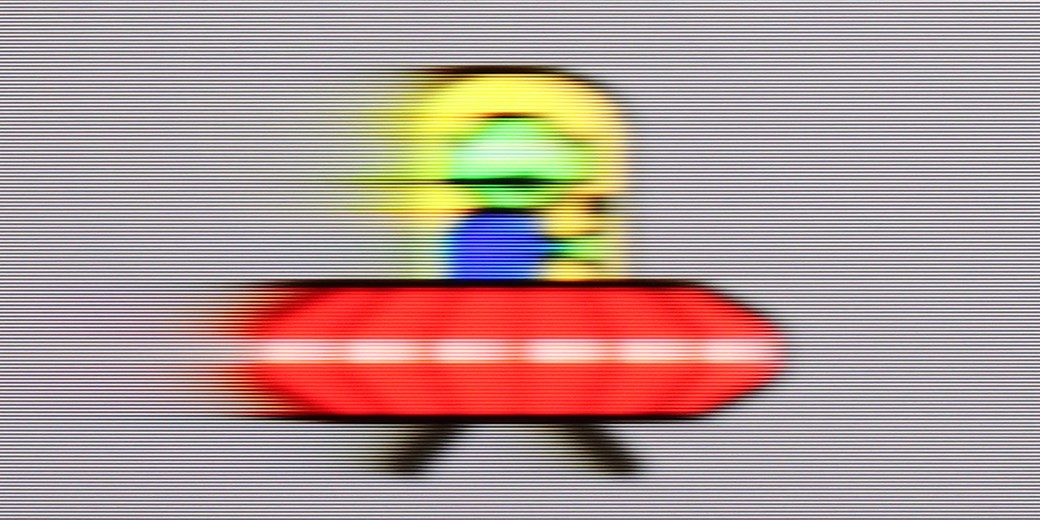

As befits an OLED television, Samsung S85D offers excellent motion fluidity. Equipped with a 120 Hz panel and a fast response time, the TV delivers very smooth playback of dynamic scenes without visible blurring. For movie enthusiasts, there is a feature called "Picture Clarity Settings," which allows for adjusting the image smoothness to individual preferences on a 10-point scale. Motion blur reduction enhances the sharpness of fast-moving objects, while motion smoothing eliminates the "judder" effect for a smoother motion. This way, every user can set the appropriate level of clarity that best suits their taste, from a more cinematic effect to clearer, smoother movements.
“Speed” – this word was most frequently mentioned during our tests of the U7Q PRO. The television is equipped with a 165 Hz panel, which in itself is impressive – especially considering we’re talking about a mid-range model. Of course, PC gamers will benefit the most from its full capabilities, but even during everyday viewing, it’s clear that this is a fast and efficient panel. Like most modern televisions, the U7Q PRO can also enhance the smoothness of films that were originally recorded at 24 frames. In the menu, we find a slider that allows us to adjust the effect to our own preferences – from a more cinematic feel, with subtle motion, to a stronger smoothing with the characteristic “soap opera effect.”
Console compatibility and gaming features
9.5/10
8.5/10
- ALLM
- VRR
- VRR range48 - 120Hz48 - 288Hz
- Dolby Vision Game Mode
- Correct implementation of HGIG
- 1080p@120Hz
- 1440p@120Hz
- 4K@120Hz
- Game bar

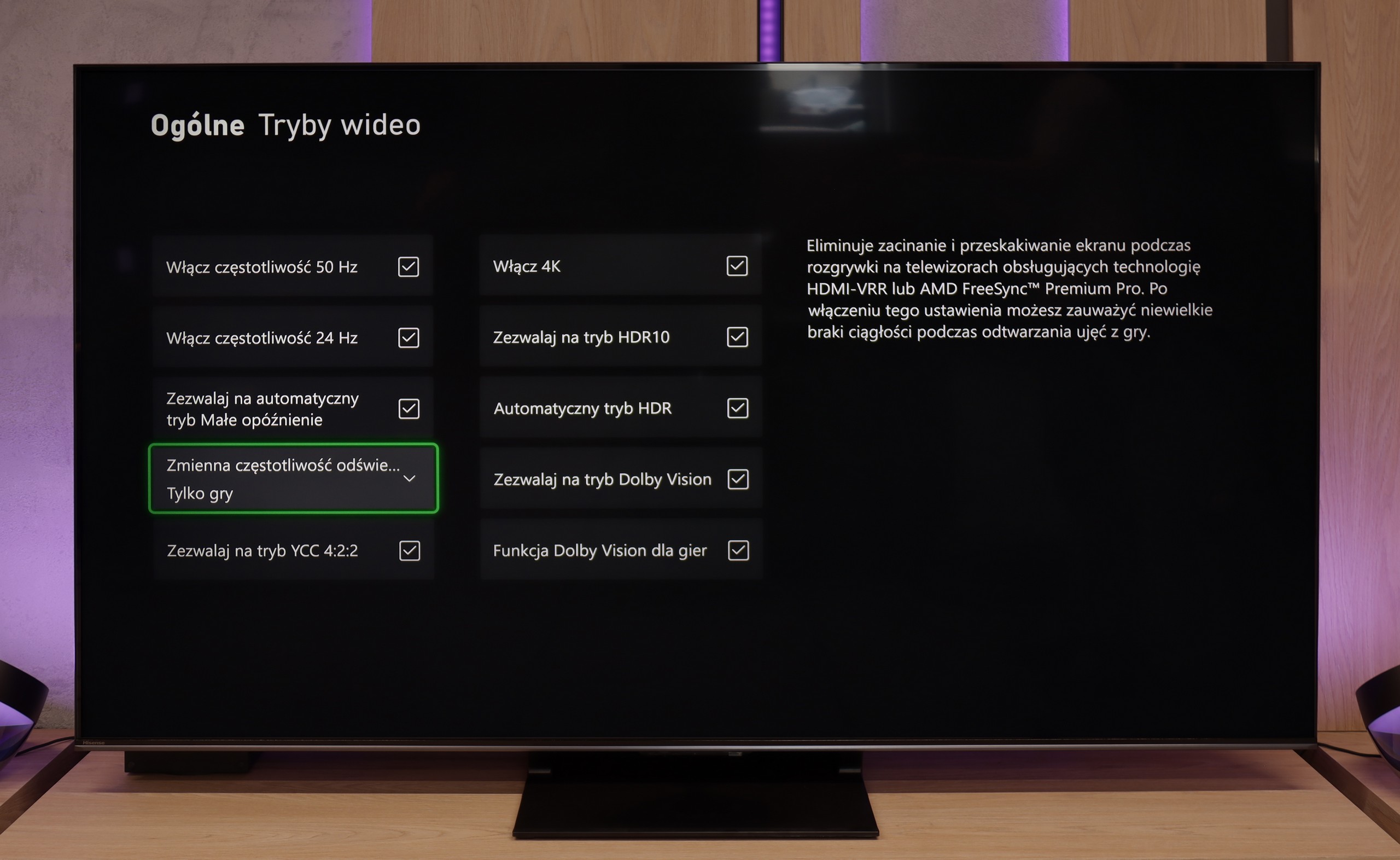



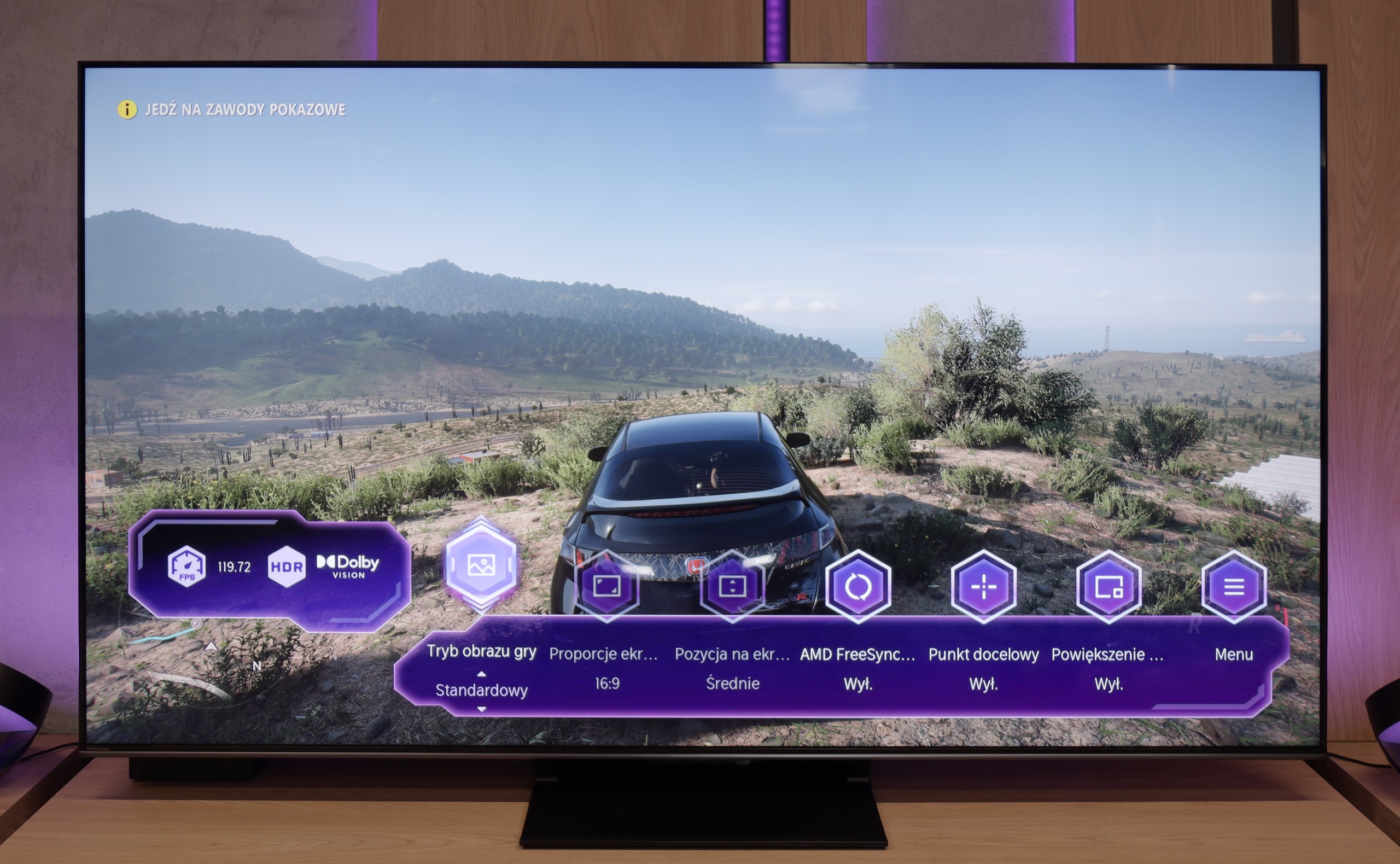

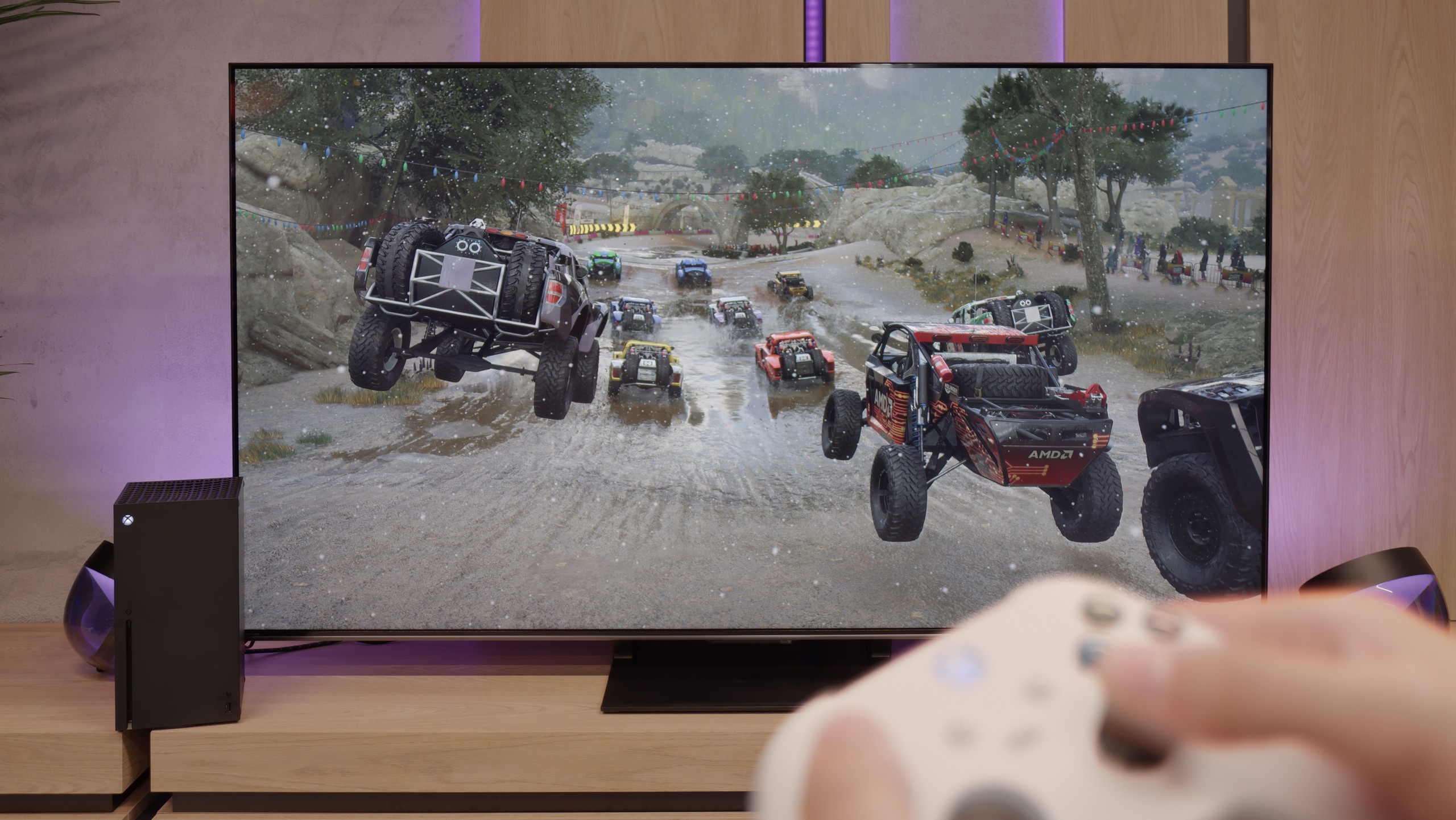
Samsung S85D OLED is an excellent choice for gamers thanks to its many modern features that make gameplay easier and more enjoyable. The TV has four full-bandwidth HDMI 2.1 ports, allowing you to connect the latest consoles without worrying about limitations in image quality or frame rates. This means support for 4K resolution at 120 Hz, which is ideal for modern titles. Additionally, the Samsung S85D has an ALLM (Auto Low Latency Mode) feature that automatically activates low latency mode when it detects a gaming device. This means you don’t have to manually switch settings – the TV takes care of ensuring fast response times, which is crucial in games where every second counts.
The VRR (Variable Refresh Rate) feature and G-Sync support are additional elements that make gameplay smoother. VRR adjusts the refresh rate to match the frame rate generated by the console or computer, eliminating screen tearing and stuttering. This is especially useful in fast-paced games where the frame rate can fluctuate. Auto Motion Plus Game is a feature that Samsung introduced with gamers in mind, and it’s worth appreciating. It makes the picture in games smoother – 30 frames per second looks like 45, and 60 Hz gains in smoothness, giving an effect close to 90 Hz. At the same time, there’s no significant increase in input lag, which remains below 25 ms, making this feature stand out compared to others available on the market. Gamers can enjoy smoother visuals without worrying about reduced responsiveness.
Samsung has also thought of something extra – the TV has a built-in Xbox Game Pass app, which means you can game in the cloud without needing a console. It’s a great solution for those who want to enjoy gaming without investing in additional hardware. All you need is an internet connection, and you have a massive library of games at your fingertips. This makes Samsung S85D an excellent choice for both casual and more advanced gamers.
Hisense U7Q PRO is a TV that seems to have been designed with gamers in mind. We have practically everything that can be expected from a gaming screen: variable refresh rate (VRR), automatic mode (ALLM), and as many as four HDMI 2.1b ports with full bandwidth of 48 Gb/s. Additionally, there’s a clear and quite functional Game Bar, as well as a well-implemented Dolby Vision GAMING mode that works seamlessly with Xbox Series S and X consoles.
Sounds like the ideal? Well, almost. Unfortunately, Hisense has still not implemented the HGiG feature, which is the system's tone mapping limitation on the TV's end. This means that when configuring HDR brightness on the console, we do it “by eye” or look for settings in online guides, as the screen does not display its actual brightness range. It’s a shame – because HGiG makes it easier to match the console to the TV and helps avoid overexposed or too dark scenes in HDR games.
Fortunately, the other elements work very well. Input lag is low, responsiveness is excellent, and the handling of other features is faultless. And although not everything worked perfectly, the U7Q PRO can still be confidently recommended to gamers.
Input lag
9.9/10
9.8/10
SDR
HDR
Dolby Vision
Samsung S85D achieves excellent results in terms of input lag, regardless of refresh rate or resolution. This means that the screen responses are nearly instantaneous, which is particularly important in fast-paced, dynamic games. Gamers can rely on the TV's lightning-fast response to controller movements, providing an edge in competition and greater satisfaction in gameplay. Low input lag is a definite advantage of this model, making the Samsung S85D OLED an ideal choice for gaming enthusiasts.
In terms of signal delay, the Hisense U7Q PRO performs exceptionally well. For 120 Hz content, the input lag stays below 10 ms, which translates to a lightning-fast response – the screen almost instantly reacts to our movements, something console and PC gamers will particularly appreciate. With 60 Hz content, the situation looks a bit worse, as the response time doubles – this is natural and applies to virtually all televisions. Nevertheless, it still remains below 20 ms, which can be confidently regarded as a very good result, almost close to perfection – and in practice, it’s hard to feel this during gaming.
Compatibility with PC
7.6/10
8.2/10

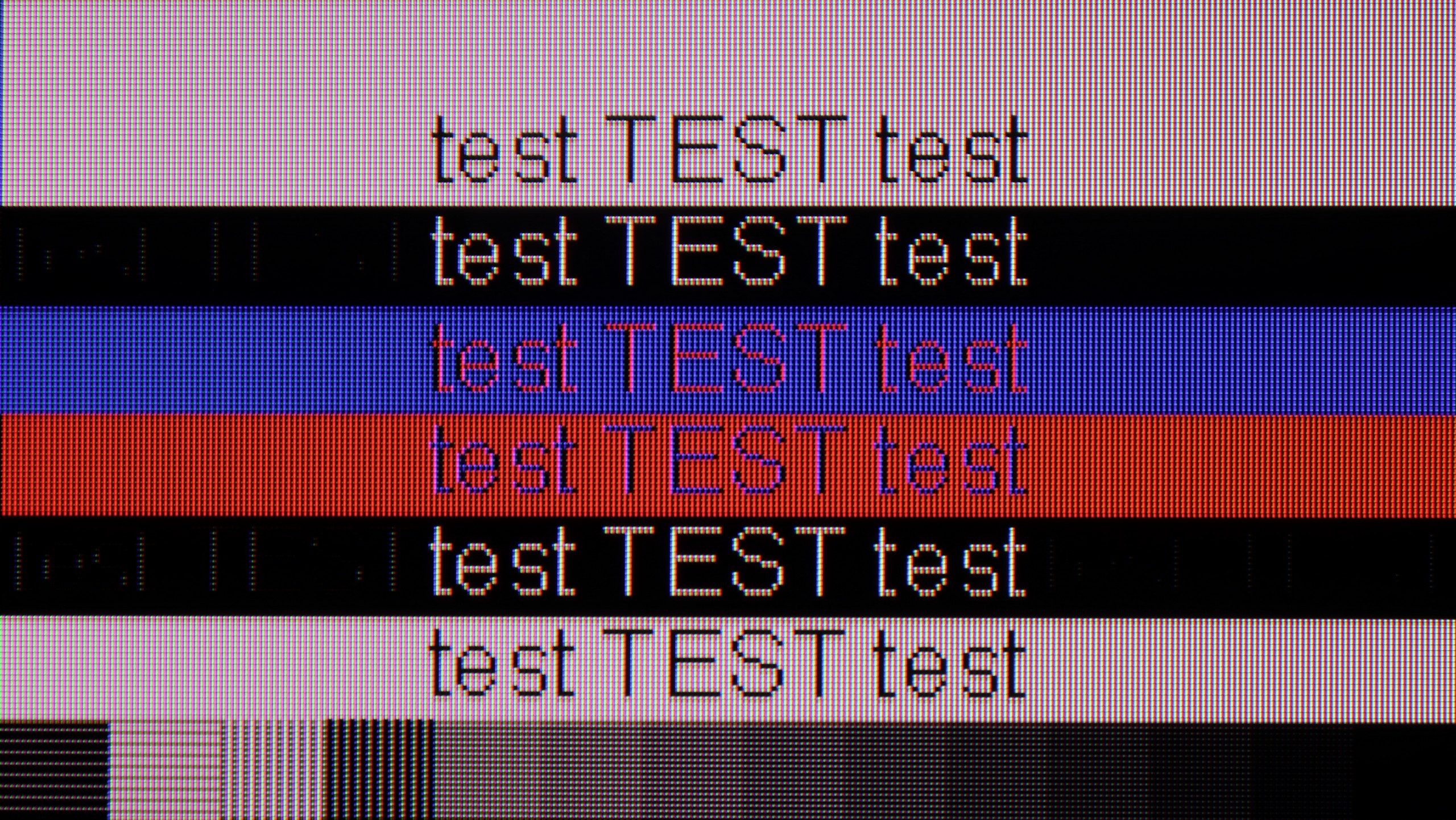
Samsung S85D performs very well as a computer monitor. With clear visibility of text, regardless of the background type, using it is convenient and comfortable. Chroma 4:4:4 support ensures precise reproduction of text and graphics, which is essential for office work, browsing the internet, or editing documents. Samsung S85D is a versatile television that easily serves as a monitor for everyday use. We deducted 0.4 points for the WRGB layout, as is common with every television with such a sub-pixel arrangement.
Playing on a PC with the Hisense U7Q PRO is pure fun. Low input lag, a full 165 Hz in 4K and even 288 Hz in Full HD – these are numbers we wouldn't expect from a TV at this price. In this regard, it's really hard to nitpick. If someone is looking for a large screen for gaming from a PC – the U7Q PRO can confidently serve as a monitor. It performs a bit worse for everyday text work. Although chroma 4:4:4 is present, so theoretically, everything should look good. But in practice, grey text on a dark background looks strange – vertical lines are sharp, but horizontal ones can blur, disappear, or look slightly dimmed. However, it's fair to add that if you use the TV as usual – that is, from a few metres away – you're unlikely to notice this. The issue only becomes apparent when someone places the U7Q PRO on a desk, a metre from their face, and starts working with text or spreadsheets. If you plan to use it in this way – it’s worth keeping this in mind.
Viewing angles
7.7/10
3/10
The viewing angles on the Samsung S85D are excellent, as expected from OLED. The picture remains crisp and doesn't lose quality even when watched at a wide angle, making the TV perfect for larger rooms and shared viewing with family or friends. The only TVs that offer better viewing angles are those with QD-OLED organic matrices or MLA OLED.
In this regard, the U7Q PRO performs averagely. The television is equipped with a VA panel, which is not known for its wide viewing angles. When you start looking at the screen at an angle, the image clearly loses brightness and the colours start to fade. This is a completely normal phenomenon in VA panels without additional coatings to widen the angles – so if you plan to watch from the side or with a larger group, it's worth keeping this in mind. On the other hand, head-on – the image looks great, with deep blacks and very good contrast, much better than on IPS/ADS panels.
TV efficiency during daytime
5/10
6.2/10




Matrix brightness
Average luminance SDR
Hisense U7Q PRO: 472 cd/m2
Samsung S85D: 313 cd/m2
Samsung S85D performs quite well with reflections thanks to the matte screen's satin finish, which effectively dampens them. Unfortunately, the SDR brightness of 310 nits is rather average, meaning the TV's effectiveness may be limited in very bright rooms. It’s not an impressive result, so this model will definitely perform better during evening viewing when such brightness will be sufficient. During the day, to achieve better comfort, it may be necessary to draw the blinds or curtains.
As we mentioned earlier – the U7Q PRO is a really bright TV, especially when it comes to HDR content. For SDR materials, the TV dims a bit, but an average brightness level of around 500 nits is still a very solid result. This means you can easily watch TV or movies even in quite a bright room. Only under very extreme lighting – like direct strong sunlight on the screen – can visibility suffer a bit. Fortunately, Hisense has applied a satin anti-reflective coating that effectively reduces reflections, and the blacks maintain their depth even during the day. This makes a difference and allows for comfortable use of the TV in various lighting conditions.
Details about the matrix
Subpixel Structure:

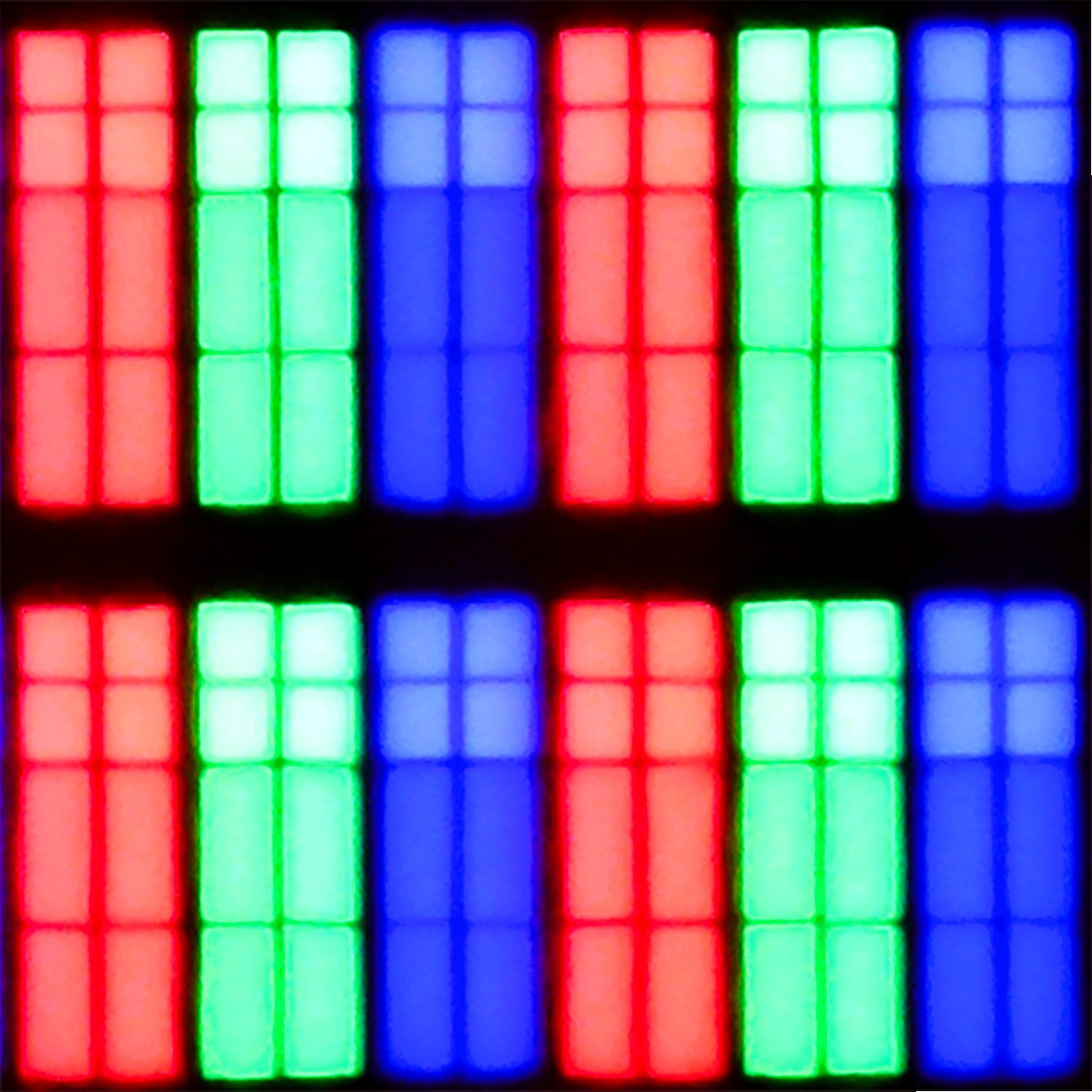
Panel uniformity and thermal imaging:

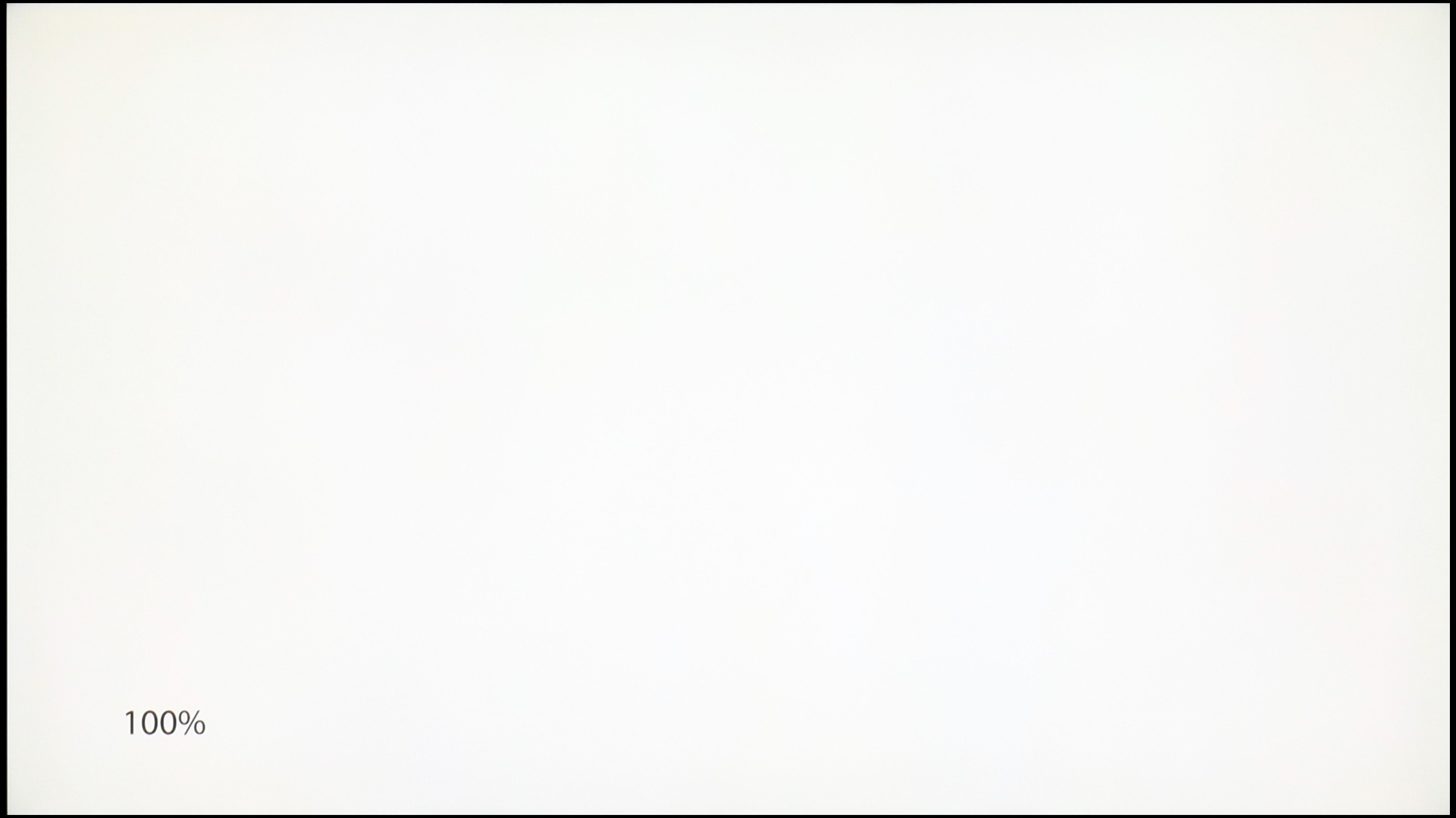
Samsung S85D
Hisense U7Q PRO
TV features
7.4/10
9.4/10
- HDMI inputs0 x HDMI 2.0, 4 x HDMI 2.1 48Gbps0 x HDMI 2.0, 4 x HDMI 2.1 48Gbps
- Other inputsRCA (Chinch)
- OutputsToslink (Optical audio), eARC (HDMI), ARC (HDMI)Toslink (Optical audio), eARC (HDMI), ARC (HDMI), Mini-Jack (Headphones)
- Network InterfacesWi-Fi 2.4GHz, Wi-Fi 5GHz, Ethernet (LAN) 100MbpsWi-Fi 2.4GHz, Wi-Fi 5GHz, Ethernet (LAN) 100Mbps
- TV receptionDVB-T, DVB-T2, DVB-S, DVB-S2, DVB-CDVB-T, DVB-T2, DVB-S, DVB-S2, DVB-C
Classic features:
- Recording to USB (terrestrial TV)
- Recording programming
- Picture in Picture (PiP)
- RF remote control (no need to aim at the screen)
- Backlit remote control
- Teletext
- Audio only mode
- Bluetooth headphones support
- Simultaneous Bluetooth headphones & TV audio
Smart features:
- AirPlay
- Screen mirroring (Windows Miracast)
- Voice search
- Voice search in native language
- Ability to connect a keyboard and mouse


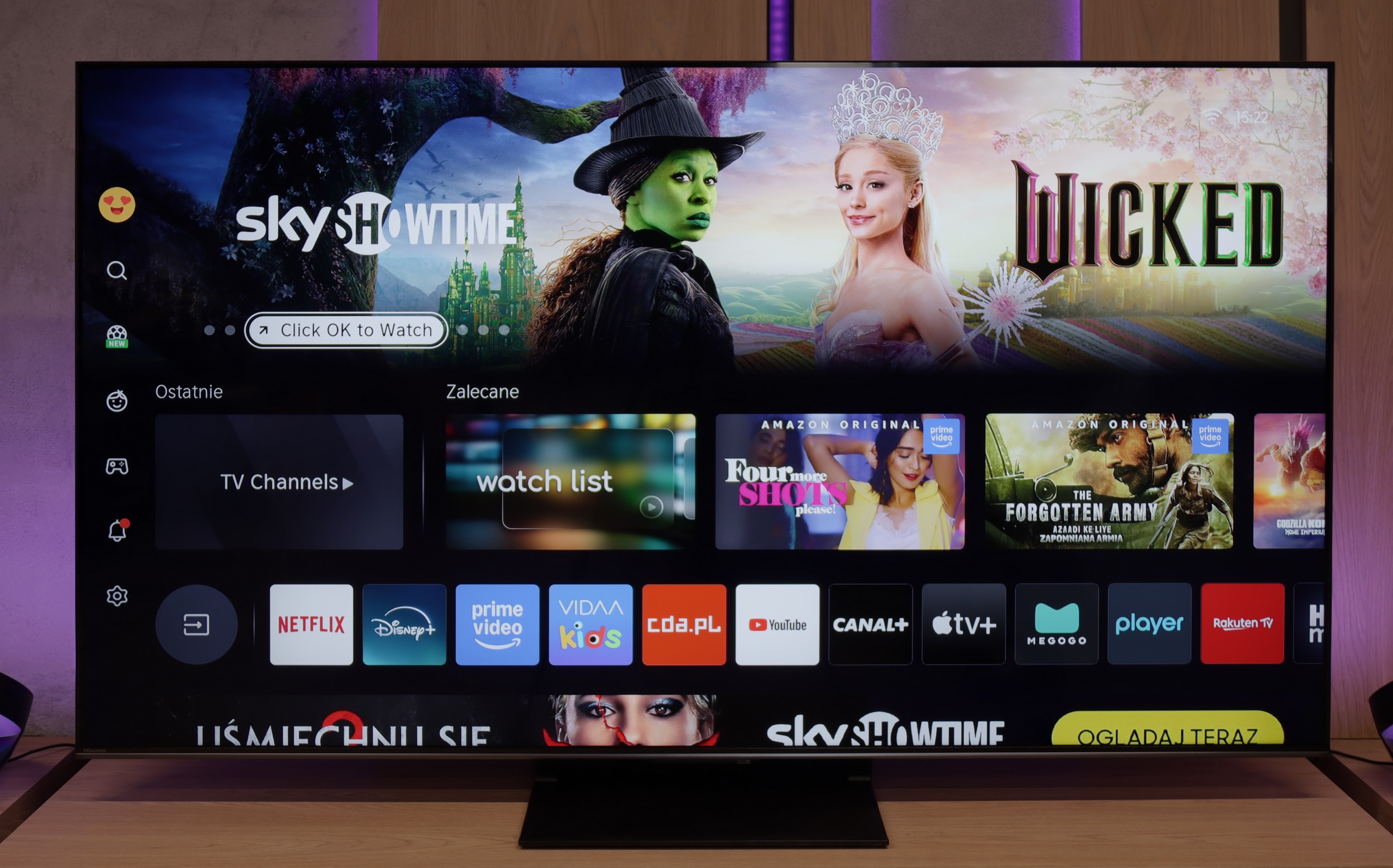
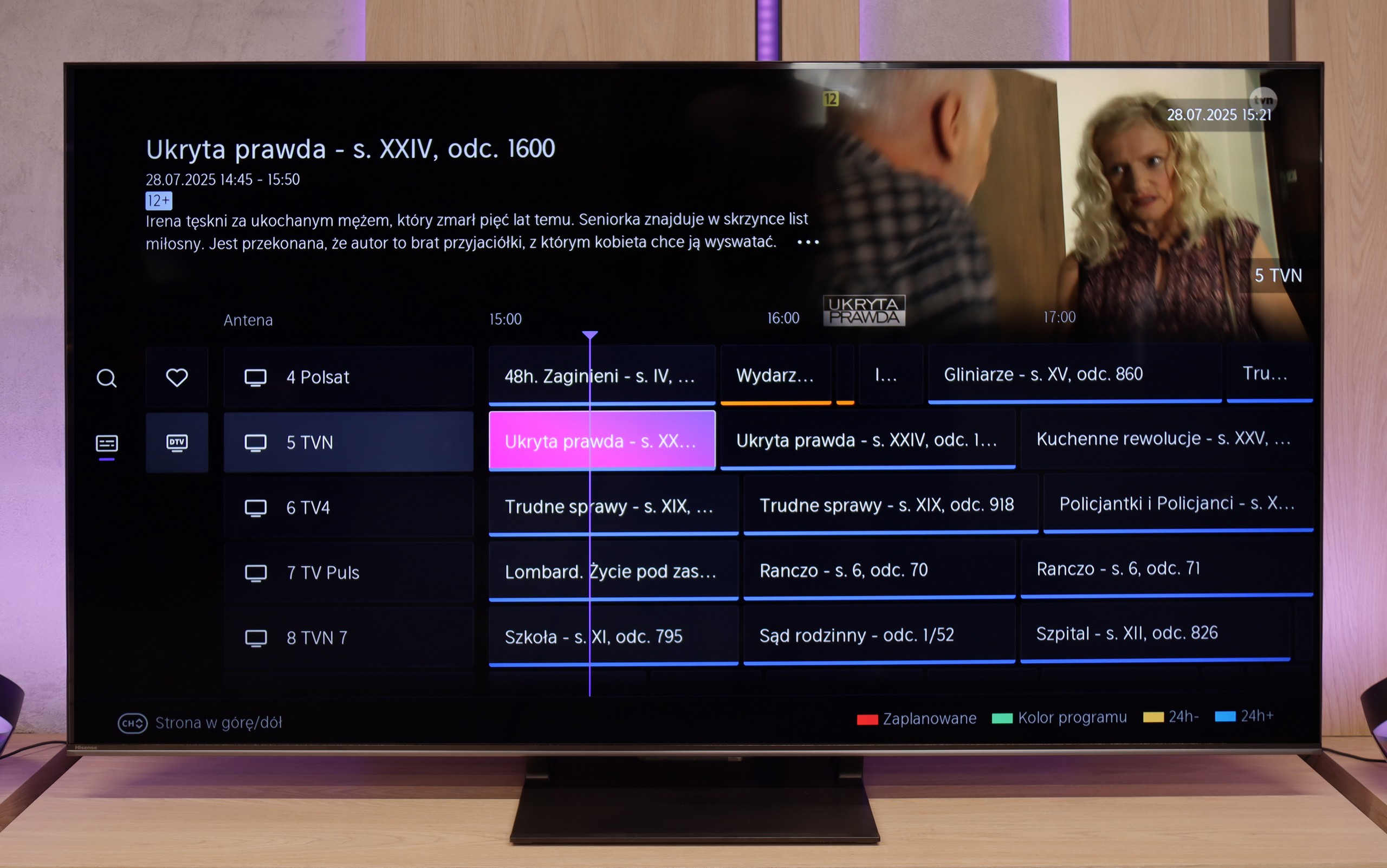
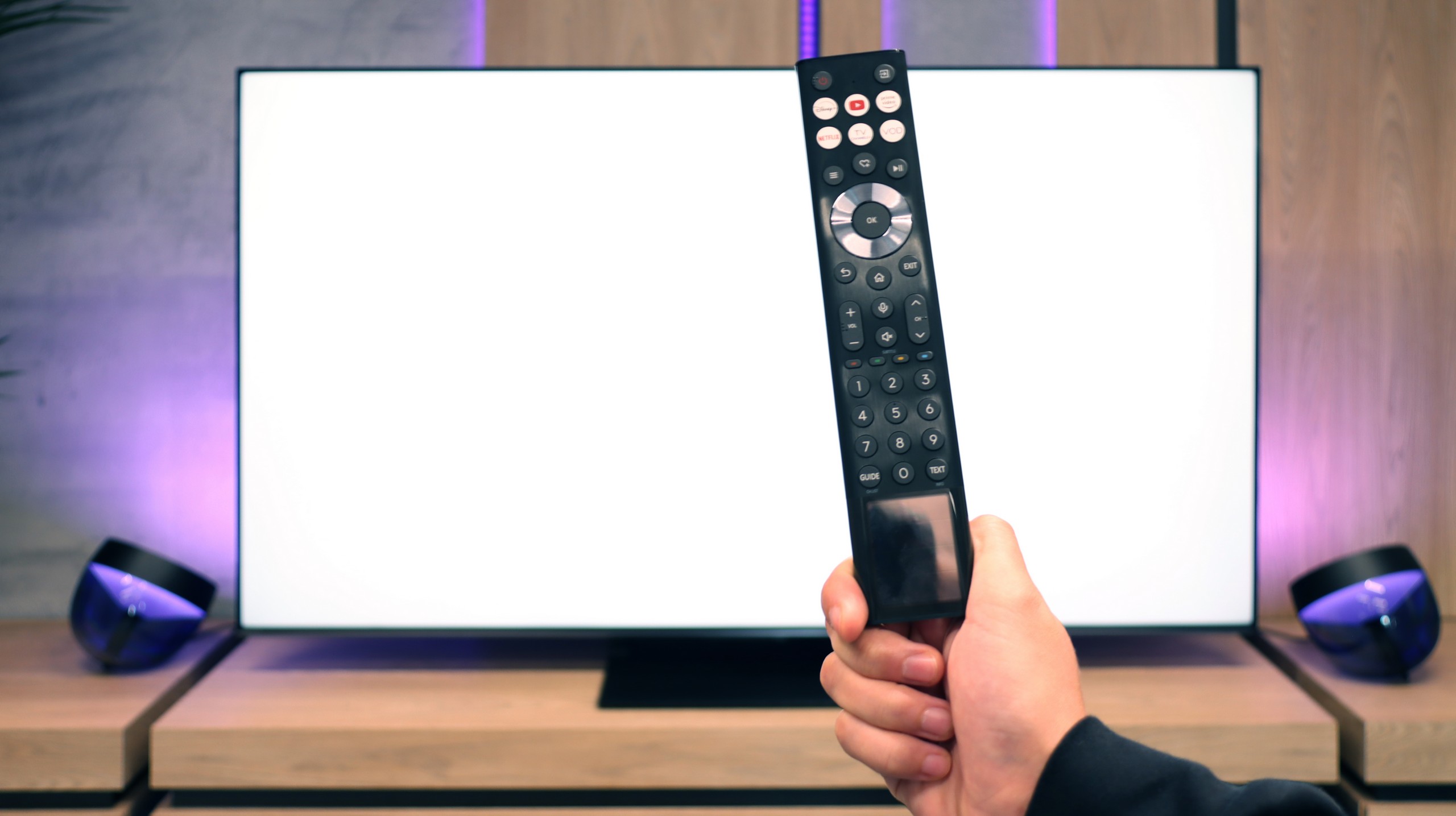
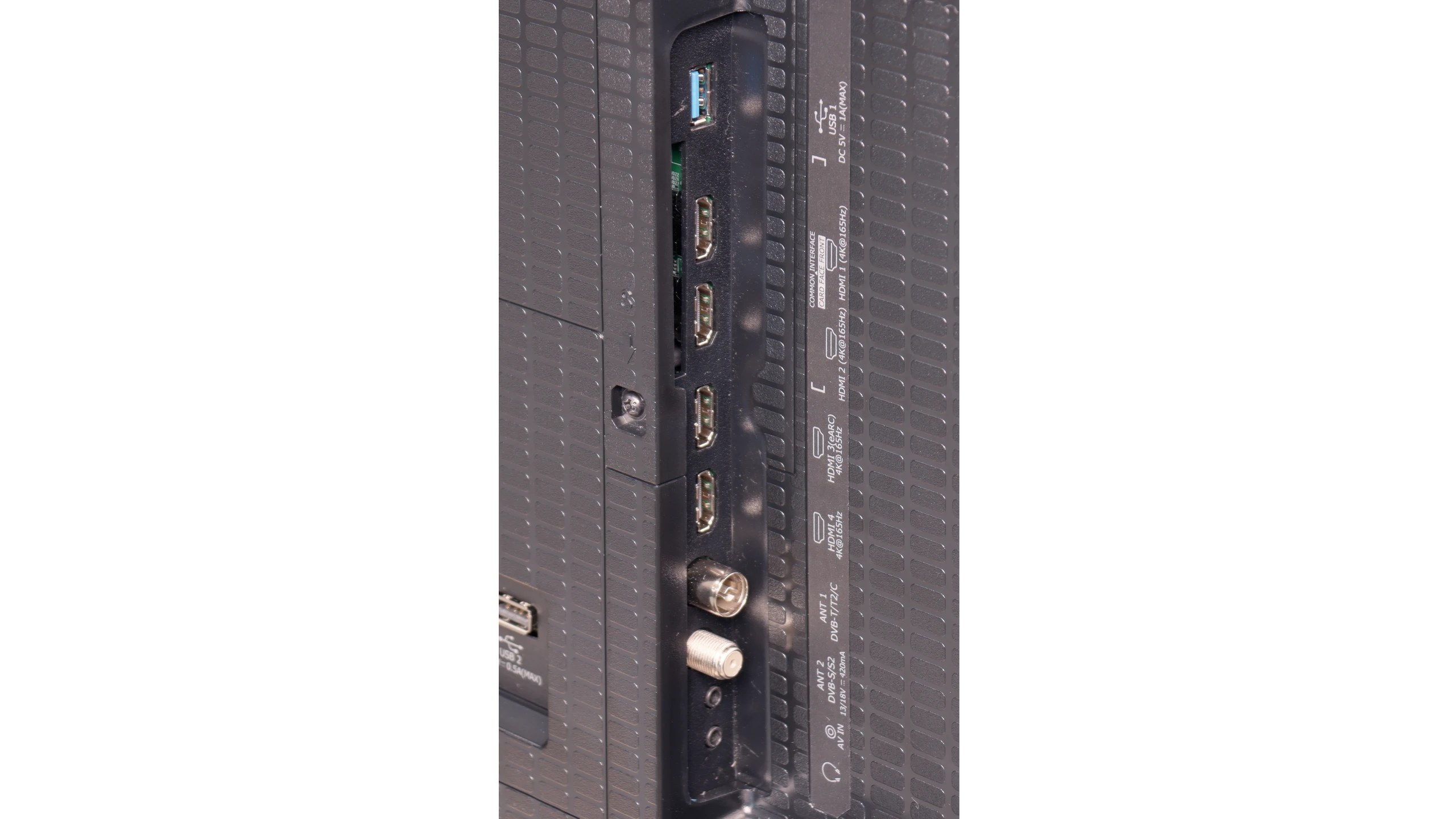
Samsung S85D runs on the Tizen operating system, which is intuitive and provides easy access to many apps and streaming services. The system offers smooth and quick navigation, significantly improving the comfort of using the television. The TV is equipped with a solar-powered remote control, which allows for the control of other devices, such as set-top boxes or home theatre systems, enabling the operation of all home equipment with one device. In terms of connectivity, the Samsung S85D supports AirPlay, making it easier to stream content from Apple devices, and it has a built-in Bluetooth module that enables the connection of peripheral devices, such as keyboards, headphones or speakers.
When it comes to everyday use of the television for regular TV shows, the S85D model offers several useful features but also has some drawbacks. One of its advantages is the PIP (Picture-in-Picture) function, which allows for simultaneous viewing of two contents – for example, a match in a small window while the rest of the screen shows a favourite series. This is a convenient solution for those who want to stay up-to-date with various programs. However, it is disappointing that there is no recording capability from the built-in tuners. This limitation makes it impossible to save favourite programs or movies for later, which can be a problem for those who want to flexibly adjust their TV watching to their schedule - however, we believe that the absence of this feature is becoming less of a burden, as users now have wide access to various content online, making the need for recording less significant.
The design of the OLED Samsung S85D stands out with its distinctive, rounded shape at the back, setting it apart from most OLED televisions that typically have a flat back. This unusual design gives it a unique look and attracts attention, making the television appear modern and elegant. The package includes a remote control, a CI+ module, a stand in the form of two feet, and a power cable, allowing for a quick and convenient start to using the television without the need to purchase additional accessories.
Classic features of U7Q PRO
If you plan to use the television in a more "classic" way, that is, for watching daily programs or connecting headphones, the Hisense U7Q PRO has almost everything you could expect. The television easily supports recording to USB, you can connect headphones via Bluetooth, and the remote control is backlit, which is still not standard even in more expensive models. While many people today are foregoing these classic features in favour of streaming apps, it's good to know that the U7Q PRO still does this well and without compromises (aside from the lack of PiP functionality).
SmartTV System: Vidaa
When it comes to smart features, in Europe this model runs on the VIDAA system. The system operates smoothly, has a built-in web browser, supports voice control (also in Polish), and includes AirPlay, which will please users of Apple devices. However, it should be noted that VIDAA is a closed system, so you won't find all the popular apps that we've become accustomed to with Android TV or Google TV. Before purchasing, it's worth checking whether the apps you actually use are available.
Playing files from USB
9.1/10
8.2/10
Supported photo formats:
Maximum photo resolution:

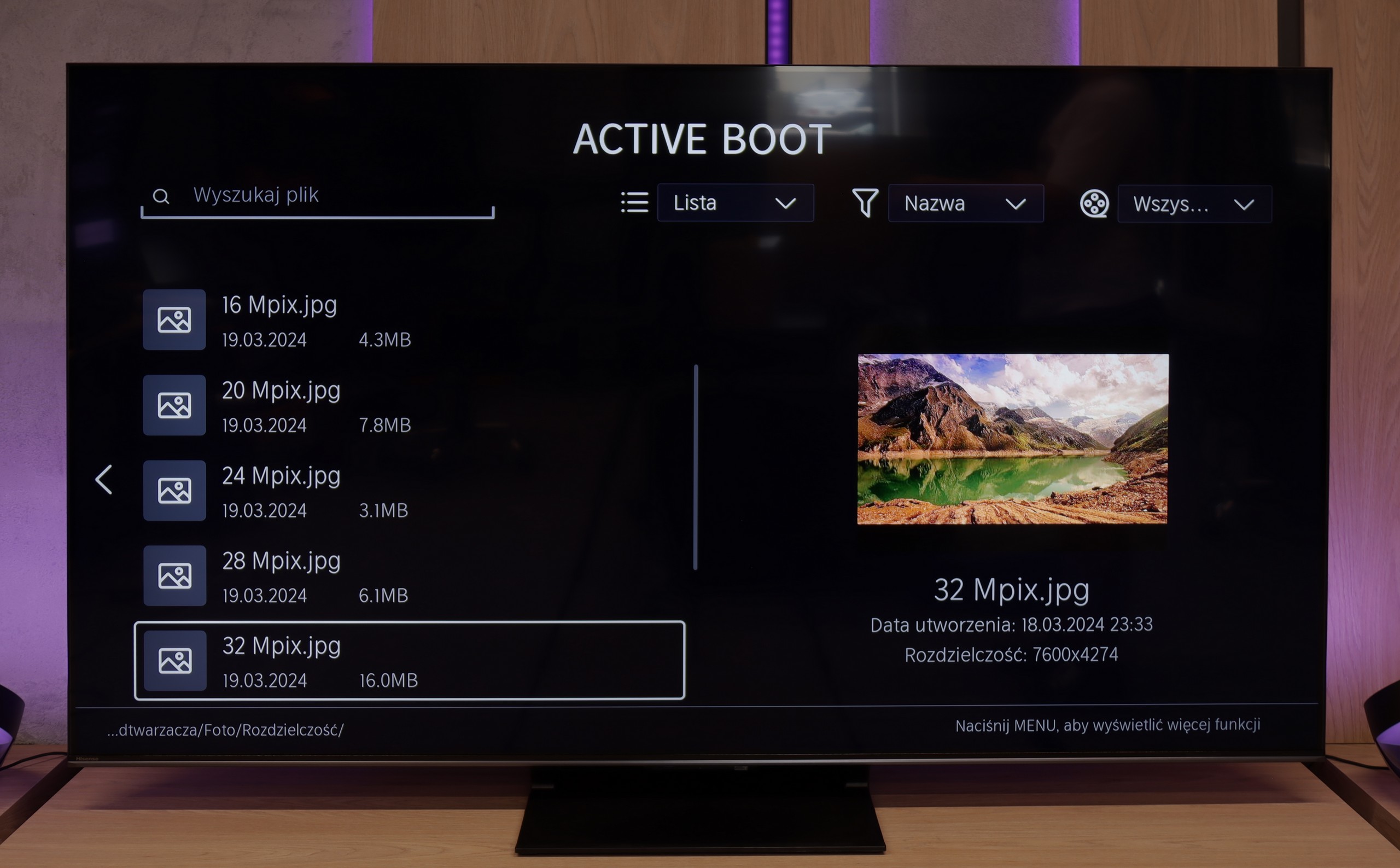
Playing multimedia files on Samsung S85D will satisfy most users. The television offers wide compatibility with popular video, audio, and image file formats, providing smooth playback from both USB media and local networks. The built-in media player operates efficiently and is easy to use, although there may be issues with some less common formats.
The built-in media player in the VIDAA system worked very efficiently and seamlessly on our U7Q PRO unit. The television had no trouble reading external video and audio files, as well as subtitles, making it convenient to watch movies from a USB drive or external hard drive. Most popular formats worked flawlessly, so there was no need to convert anything. The only complaint is a certain selectiveness in handling high-resolution images – not all of them opened. Therefore, you will find a detailed list of supported image resolutions (Mpix) in our comparison table.
Apps
8.7/10
7.7/10














































Sound
7/10
7.8/10
- Maximum volume-85dB
- Dolby Digital Plus 7.1
- Dolby True HD 7.1
- Dolby Atmos in Dolby Digital Plus (JOC)
- Dolby Atmos in Dolby True HD
- DTS:X in DTS-HD MA
- DTS-HD Master Audio
Samsung S85D OLED offers quite decent sound, even though the built-in speaker system is not particularly impressive (2x10W). The television supports Dolby Atmos technology, which provides spatial sound, however, it does not support the DTS format. The sound is clear and sufficient for everyday use, although for more demanding users it may be advisable to connect an external audio system for a fuller and more dynamic sound.
For built-in TV speakers, the U7Q PRO sounds surprisingly good. The audio is clear, with distinct mid and high tones, and while the bass is somewhat limited, it doesn’t completely disappear. One could say that for "TV speakers," the level is more than satisfactory. However, it’s worth noting that in our test unit, we couldn't play DTS:X audio from local files – the TV simply doesn’t support it. This means that if you’re counting on a cinematic surround effect solely from its built-in speakers, there might be a bit of a letdown. Thankfully, the TV seamlessly transmits DTS signals to an external amplifier, so if you have a home theatre – just connect it up and everything works as it should.
Sound Quality Test
No sound test video
Acoustic Measurements
No acoustic data
85dBC (Max)
75dBC
